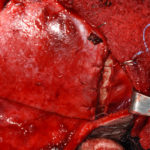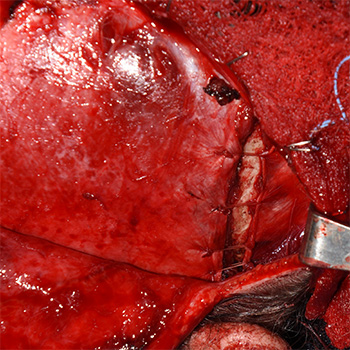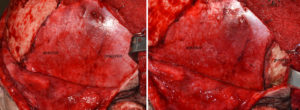Background: Head width reduction is commonly perceived as a bone thickness problem. But the reality is that the posterior temporal muscle makes an equal, if not greater contribution, in many cases. As a result, muscle removal has proven to be a highly effective and successful procedure with no adverse sequelae for head width reduction.
Posterior temporal muscle removal for head width reduction has evolved into a procedure that is done from an incision exclusively behind the ear. From this approach, the muscle is removed leaving the overlying fascial intact. Keeping the fascia intact is helpful to act as a ‘damper’ on the transition across the vertical cut edge of the muscle. It also serves to keep another layer of tissue between the skin and subcutaneous layers from that of the bone.
While temporal reduction is done today through a very limited external approach, it has its origins from that of a much wider open approach through a coronal scalp incision. This provided a clear visual assessment of the muscle and the extent of its resection. While not often done today it can still be done so if a coronal approach is being used for other skull reshaping procedures.
Case Study: This young transgender male to female was to undergo brow bone reduction and forehead reshaping. She was also interested in reducing the width of her head above the ears as she felt it was too wide.

Her postoperative comments were the she could clearly see from the first day after surgery that her head width had been narrowed.
Head width reduction by muscle removal can seen and understood quite clearly through an open coronal approach. It offers the widest extent of muscle removal in an anterior posterior direction. But is only rarely used today when the need for a coronal scalp incision is justified from needing to do other skull reshaping procedures.
Case Highlights:
1) Temporal reduction is a well described technique for reducing width at the side of the head above the ears.
2) Temporal reduction is most commonly done through a postauricular incision behind the ears with a hidden scar.
3) In rare cases where an open scalp incision is being done for other skull reshaping procedures, temporal reduction can be done…as it was originally learned how to do it.
Dr. Barry Eppley
Indianapolis, Indiana




